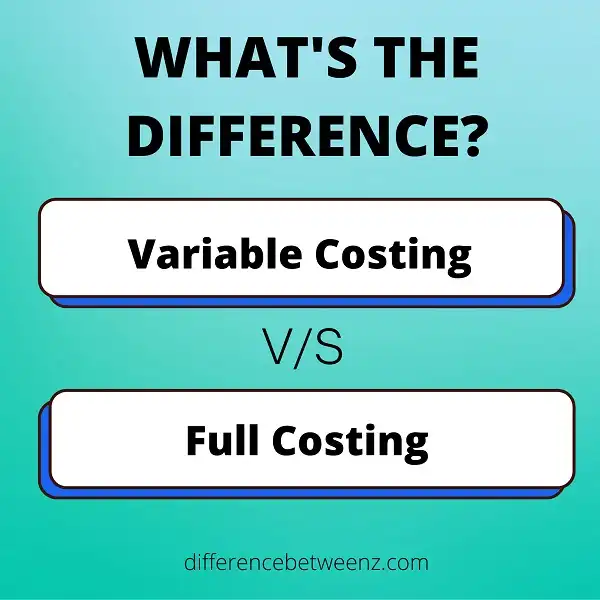The two most common costing methods used in business are variable costing and full costing. While both have their benefits, they are used for different purposes. Understanding the difference between these two methods is essential for making accurate financial decisions for your company. In this blog post, we will break down the key differences between variable and full costing, and explain when each one should be used. Let’s get started!
What is Variable Costing?
Variable costing is a term used in accounting that refers to the practice of only including direct costs in the calculation of unit costs. Variable costs are those that vary in direct proportion to production volumes, such as raw materials and labor. Fixed costs, on the other hand, are those that remain constant regardless of production volumes, such as rent and utilities. Under variable costing, only variable costs are included in the calculation of unit cost.
This method is commonly used in manufacturing businesses, as it provides a more accurate picture of the true cost of production. However, it should be noted that variable costing does not comply with generally accepted accounting principles (GAAP). As a result, businesses that use this method may face difficulties when reporting their financial results.
What is Full Costing?
Full Costing is a method of calculating the cost of goods that takes into account all of the costs associated with production, including fixed costs and variable costs. The goal of Full Costing is to provide a more accurate picture of the true cost of goods, which can be helpful in making pricing decisions. Fixed costs are expenses that do not change based on production volumes, such as rent or insurance. Variable costs are expenses that increase as production volume increases, such as raw materials or labor.
Full Costing assigns a portion of fixed costs to each unit produced, based on the expected level of production. This provides a more accurate picture of the cost of goods than a method like Variable Costing, which only includes variable costs in the calculation. Full Costing can be helpful in making pricing decisions because it provides a more accurate estimate of the true cost of goods. However, it is important to remember that Full Costing includes both fixed and variable costs, so it will generally produce a higher cost per unit than Variable Costing.
Difference between Variable Costing and Full Costing
Variable Costing and Full Costing are two methods of calculating the cost of goods sold. Variable Costing only considers the variable costs associated with production, such as direct materials and labor. Full Costing includes both variable and fixed costs. Fixed costs are those that do not change based on the level of production, such as overhead. The main difference between Variable Costing and Full Costing is the way in which they treat fixed costs. Variable Costing treats fixed costs as a period expense, meaning they are not included in the calculation of the cost of goods sold.
Full Costing includes fixed costs in the calculation of the cost of goods sold. As a result, Variable Costing typically results in a lower cost of goods sold than Full Costing. Variable Costing is often used for managerial decision-making because it provides a more accurate picture of the variable costs associated with production. However, Full Costing is required for financial reporting purposes.
Conclusion
The two costing methods have different purposes and advantages. Variable costing is used to calculate the profit or loss of a product, while full costing takes all costs into account when measuring profitability. Which method you use depends on your business needs and goals.


